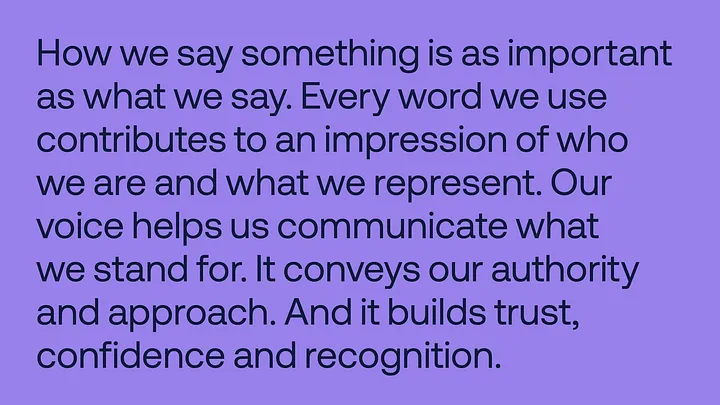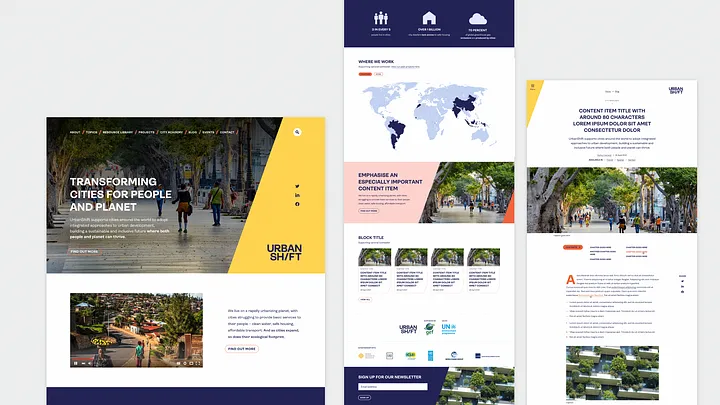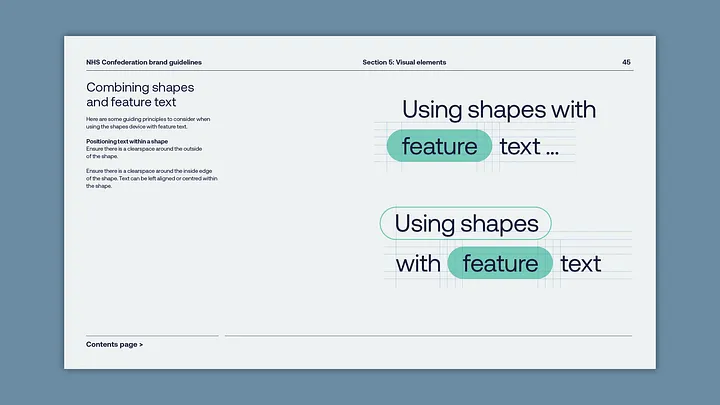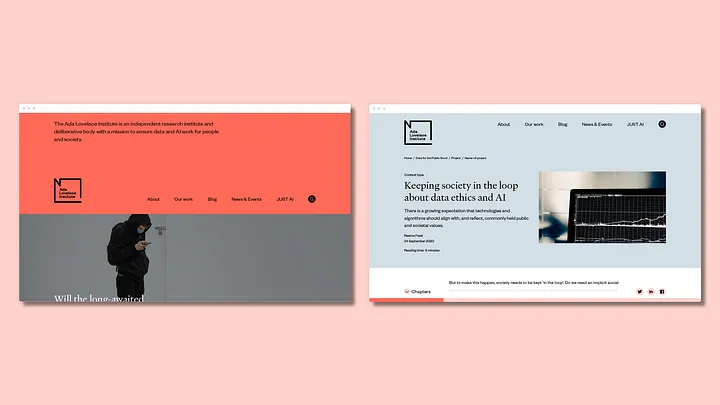You’ve decided it’s time for a new website but, where do you start with your Request for Proposals (RfP)? A comprehensive RFP ensures that you’ll get a set of responses that are considering the same requirements and you can compare like with like.
In this article we provide some suggestions on what to include in an RfP for a new website build. Including this level of detail will ensure you get proposals from firms that are capable of delivering what you need to the highest standards, and will avoid surprises on timelines and budgets as the project progresses.

Who are you?
Most organisations have plenty of content to explain their values, mission, focus and main areas of work. This kind of high-level description is very useful to us- not only does it help us learn more about you, but it also gives us a bit of insight into your organisational language.
When writing an RfP, it is also helpful to provide information on your main areas of interest, what activities you engage in and what outputs you produce, an overview of your organisation’s trajectory, and how many people work there.
Basically, we want to know as much as we can about you- from you!

Why do you need a new site?
As you draft your RfP it’s worth coming up with some initial thoughts about what you want to achieve by building and running this new website. Why now? Perhaps you are about to enter a new funding cycle, or there has been a change in management, or maybe you just realise it’s time to invest in your digital presence. Whatever the reason is, it is helpful to include it in the RfP. You might think of this as a list of goals and requirements against which you can judge the success of the finished product.
Most organisational sites serve as a way of introduction to an organisation, and help establish its desired brand identity and positioning. For many of our clients their website acts as a research repository for publications and other outputs, so they want users to be able to find this content easily. You may also want to include some information about what you think of your current website and how it falls short of your expectations for the new site.
While we’ll certainly be having more in-depth conversations about these requirements in the discovery stage of your project, outlining what you already know about how you want your users to interact with your content helps us build a more comprehensive proposal with an accurate timeline and financial proposal.
Who do you want to reach?
It is helpful if you can provide some information in the RfP about who you want to reach. If you want to prioritise certain audiences over others, or target different groups in different ways, it is worth adding in these details as well. We look at audiences in greater detail in the research and discovery stages of the project, but including some information about them on the RfP helps us to understand the scope of the project.
If possible, it is good to get a sense of how these audiences see you (if at all) and how you might like this to change. If you have any useful information from Google Analytics or more qualitative feedback on your existing site, you may wish to summarise it here.
What will users find on your site?
It is helpful to know what types of content your site is going to contain — particularly if some of these are a bit out of the ordinary or require some further thought. We can work with you on mapping your content types and taxonomies, but early information about anything unusual or integrations that might be required is really helpful at this stage.
It is also worth giving some summary information about other aspects of your organisation’s online presence — social media, microsites, sign-up forms (i.e. Newsletter sign-up) and similar services etc — and how you want these to appear on the new site.
How will you populate the new site with content?
If you already have a website, and it includes an archive of existing repeatable content items (such as publications, blog posts/articles and past events), the RfP should ask potential suppliers to provide information on how they might go about migrating these content items automatically. Otherwise, it may be assumed that you plan to do this work manually, and the work involved will not be costed in the project plan.
That being said, a new website offers a good opportunity to revisit the content of your key pages, including your homepage and section landing pages. Many organisations simply manage this content creation work in house, but if you would like help with this (or simply to know options there might be) you should mention this in the RfP.

What are your expectations on branding and visual design?
Part of developing a new website includes familiarising ourselves with your brand and all its applications. While it might seem premature at the RfP stage, it is worth sharing your existing branding guidelines and/or some examples of offline applications of your visual identity. Seeing this helps us understand how your brand is implemented across the board, and where we can apply the visual identity in more effective ways.
If you are inclined to update your branding in the near future, it is worth noting this in the RfP.
If the website is a brand new initiative and no brand exists yet, make it clear that some work will be required — whether it’s a visual identity that will work for you offline as well as online, or a full brand strategy.
We aim to design our websites to the AA standard of accessibility (following W3C’s Web Content Accessibility Guidelines). We recommend that you stipulate this in the RfP and state any other accessibility requirements you need the site to meet.
Who’s going to be involved in the project?
It is helpful to know who will be involved in the project from your side: who will be the project team lead, what is their role within the organisation and what are their areas of responsibility within the project? Are there any other key stakeholders and how will they be involved? While you might not be ready to provide names, it is helpful to know the roles.
It is also worth knowing what degree of internal stakeholder input will be expected- how many people will be providing feedback? How will this be centralised and who will be our main point of contact? At many points in our process, it’s possible to get input in a variety of ways depending on the size of the group and the level of detail required — so understanding the expectations at your end is very helpful.
Finally, we like to know about the technical capacity and training/support requirements for the staff who will be using the site’s back end. We train our clients in the use of the CMS and we aim to make the back end of the sites we build as intuitive as possible. If you have a large team, you may want to build in additional training sessions or more detailed documentation for content editors.
What’s your deadline and your budget?
We like to be upfront with our clients about how long it takes to build a website. Our experience suggests that creating a small organisational website can take a minimum of four months, but can often be much longer. This can be influenced by internal factors such as feedback loops, add-ons over the course of the project, or changes in the team. If you need your new site to be completed by a specific date (because of a major conference or publication or strategy launch, or deadline set by your funders) it is really important that you include that in the RfP, especially if the launch date is not flexible under any circumstances.
Not everyone supplies information on the budget available on an RfP, but we find it tremendously useful to get a broad sense of how much you can spend on a new website. This allows us to tailor our services and ensure that we avoid suggesting options that will overstretch your resources. We work on a variety of sites of all sizes, from project microsites with limited lifespans to large organisational websites that need the flexibility to evolve for years. If you’re able to share ballpark budgets with suppliers, they will usually give you the best option you can get within that budget, so you don’t waste time on proposals that are far too big or too small for what you have in mind.
On technical requirements and hosting
We recommend that you stipulate an open source content management system in the RfP. While you may wish to identify a preferred CMS, we recommend that you leave this open to final decision at a later point in the process. This choice should be based on your site’s content and functionality requirements, both which are typically identified in the discovery phase of the project.
If there are any third-party systems — such as a customer relationship management system or email marketing tool s— that need to be integrated into the new site, you should give information about them here. These integrations can be costly, so it is important to include them in the RfP so you can get an accurate financial proposal.
We build responsive websites as standard but not all agencies do, so make sure you stipulate this in the RfP in case it will be costed as an optional extra.
Finally, if you believe that some of your users will have requirements that should be accommodated, such as access to the site via limited bandwidth connections, you should flag this as well.

And finally…
We realise this is already a lot of information to include in an RfP, but being as detailed as possible at this very early stage can be incredibly helpful as you start to develop your new site. In the short run, the time you spend drafting out a comprehensive RfP ensures you get proposals from agencies that can deliver what you need within your timeframe and budget. As you decide who to work with, the RfP serves as a sort of selection criteria, making the process of reviewing proposals more streamlined. In the long run, as the project unfolds, this document can serve as a go-to summary of your expectations for the project, which you can refer back to throughout the length of the project.
Include any other instructions for suppliers to follow (e.g. which sections the proposal should include and in which order). We are also often told what criteria will be applied in assessing the proposals. Finally, you also need to decide how detailed you want suppliers to be in providing an estimated cost breakdown and project timeline — bearing in mind that these can only ever be approximate before the work begins in earnest.
Don’t forget to set a deadline for responses, and to let suppliers know what the next steps might be — whether that’s in person pitches, interviews, or a due diligence process.
If you’d like to know more, or have an RfP you’d like us to respond to, please get in touch.